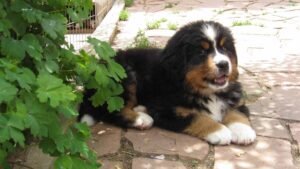
Living With the Bernese Mountain Dog
Living with the Bernese Mountain Dog: a loyal Swiss breed with a striking tri-color coat, ideal for families and gentle companionship.
Home » Dog Breeds » Bernese Mountain Dog Breed

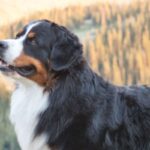
The Bernese Mountain Dog, known for its striking tri-colored coat and good-natured temperament, is a versatile working breed from the farmlands of Switzerland. Originally bred as a farm dog used to pull carts and accompany cows to pasture, and to be a loyal companion and watchdog, the “Berner” is known for its strength, intelligence, and loyalty. The breed’s calm and affectionate nature typically makes it an excellent family member, though it may retain a strong working instinct and a love of performing tasks.
Working
23 – 27.5 Inches
70 – 115 Pounds
7 – 10 Years
| Country of Origin | Switzerland |
|---|---|
| Bred For | Herding, Pulling Carts, Guarding |
| Known For | Tricolor Coat, Size, Gentleness |
| Popularity | High |
| Temperament | Alert, Confident, Good-Natured |
| Activities | Watchdog, Hiking, Carting, Conformation Shows, Dog Sports |
The Bernese Mountain Dog hails from the canton of Bern in Switzerland, a region known for its picturesque landscapes and farming heritage. This breed is one of four varieties of Swiss Sennenhunds, a unique family of dogs that was indispensable to the nation’s farmers.
Dating back over a thousand years, the ancestors of the Berner were brought to Switzerland by the Romans. Large, mastiff-like dogs were crossed with local dogs, giving rise to a breed well-suited to alpine terrain. For centuries, these dogs served as all-purpose farm dogs. Their tasks included pulling carts, moving cattle, and acting as watchdogs, protecting the farms from predators and thieves. The breed’s strength and endurance were highly valued, enabling them to transport heavy loads, often dairy products, to local markets.
In the late 19th and early 20th centuries, the advent of mechanized farming led to a decline in the breed’s population as their traditional roles on farms diminished. Concerned about the breed’s potential extinction, Swiss fanciers, led by Professor Albert Heim, a noted advocate for native Swiss dog breeds, took efforts to preserve the Bernese Mountain Dog. Heim’s work in promoting the breed included defining a Breed Standard and encouraging breeding programs, which played a pivotal role in its revival.
The Bernese Mountain Dog was first officially recognized in Switzerland in the early 20th century. The breed gained international recognition later, with the American Kennel Club (AKC) officially recognizing it in 1937. The Fédération Cynologique Internationale (FCI) and The Royal Kennel Club (UK) have also recognized the breed, acknowledging its distinct characteristics and contribution to the canine world.
Today, the Berner enjoys enormous popularity not just in Switzerland but worldwide. While the dogs’ farming duties are no longer their prime focus, they have found a new purpose in the modern world. They are now known for their work as Therapy Dogs, Search and Rescue Dogs, and as loyal family companions. Their gentle nature, combined with their striking appearance and versatility, has made them a beloved family member today.
The Bernese Mountain Dog has had a notable cultural impact in Switzerland and throughout the world. The breed is celebrated at Swiss festivals and events, often showcasing its traditional roles through cart-pulling demonstrations. The Berner’s image is frequently used in Swiss cultural materials, symbolizing the country’s rural heritage and the enduring bond that’s shared between the Swiss people and their working dogs.
An adult male Bernese Mountain Dog typically stands around 25 to 27.5 inches tall at the withers, while a mature female is slightly smaller, usually measuring between 23 to 26 inches in height.
Regarding weight, a male Berner generally tips the scales in the range of 80 to 115 pounds, whereas a female tends to be lighter, weighing between 70 and 95 pounds.
The Bernese Mountain Dog, while appearing square in proportion, is slightly longer in body length than it is tall. This key characteristic provides these dogs with the necessary agility and stability for their varied roles. They exhibit a strong and well-proportioned frame, with a harmonious and functional build that reflects its general usefulness.
In terms of substance, these dogs are large, sturdy, and well-muscled, embodying a strong and robust appearance that echoes their working heritage. They possess solid bone, with a broad chest and strong limbs that are essential attributes for their historical drafting and farm work. This combination of proportion and substance endows the Berner with a dignified and confident presence, making these dogs suitable as both a working dog and a confident companion.
Texture: The Bernese Mountain Dog boasts a distinctive double coat, composed of a longer outer coat and a soft undercoat. The outer coat is moderately long, straight or slightly wavy, providing ample protection in harsh weather. It is also dense and glossy, adding to the breed’s striking appearance. The undercoat, while not visible, is thick and wooly, offering considerable insulation during colder temperatures.
| Standard Color | |
|---|---|
| Black Rust & White | ee |
| Black Tan & White | ee |
| Black & Rust | ee |
| Black & White | ee |
| Rust & White | ee |
A Note About Color: The Bernese Mountain Dog’s coat is tri-colored, with a jet black ground and symmetrical markings in rust and white. The rust appears over the eyes and on the cheeks, both sides of the chest, on the legs, and under the tail. The white is found on the head as a blaze and muzzle band, and on the feet and tip of the tail. A white collar and/or white legs are undeniable.
The tail of a Bernese Mountain Dog is bushy and it is carried low when the dog is at rest, hanging down in a slight curve. When the dog is in motion or alert, the tail may be lifted, but it should not curl over the back. Berners have a natural tail, with a length that’s in balance with the body, reaching approximately to the hocks.
The Bernese Mountain Dog, known for its majestic appearance and gentle temperament, is a beloved breed among dog enthusiasts and families alike. However, as with any breed, owning a Berner comes with particular responsibilities and considerations. Prospective owners should be prepared to meet the needs of this large, active breed to ensure a harmonious relationship.
Bernese Mountain Dogs are generally robust and sturdy, but like all dogs, they do have specific health considerations. It is crucial for prospective owners to understand these potential issues and to collaborate with a reputable breeder and a veterinarian familiar with the breed.
Lifespan: The average lifespan of a Berner ranges between 7 and 10 years, but with proper care, regular check-ups, and a balanced diet, some can thrive beyond these years.
Despite their resilience, Bernese Mountain Dogs are prone to certain health conditions, including:
A relationship with the dog’s breeder and regular veterinary check-ups are critical for the early detection of these and other potential health issues. Wellness exams, along with specific tests for the hips, elbows, and eyes, are essential for maintaining their health.
The Bernese Mountain Dog is known for its affectionate and loyal nature, making it an excellent family pet. However, the breed’s size and temperament also come with specific considerations. When considering bringing one of these gentle giants into the home, understanding the breed’s personality and temperament is key.
Berners are typically good-natured and patient, traits that make them well-suited for families, including those with young children. The se dogs tend to form strong bonds with their human companions and are often eager to please, which can make training a rewarding experience. However, their large size means they need to be trained from a young age to make sure they are well-behaved and manageable.
These dogs are usually friendly towards strangers, showing a calm and welcoming demeanor rather than aggression or shyness. This trait also extends to their interactions with other dogs, as they generally get along well with other pets. However, as with any dog, early socialization is beneficial.
Despite their size, Berners do not typically have a high tendency to bark excessively. Their sensitivity levels are relatively high, which means they respond well to their owner’s emotions and are attuned to the atmosphere of their home. They may alert their human companions to something unusual, but they are not considered guard dogs.
Bernese Mountain Dogs are not known for being particularly independent or tolerant of being alone for long periods. They thrive on companionship and interaction with their families, so prolonged solitude can lead to anxiety or undesirable behaviors.
When considering a Bernese Mountain Dog, it is essential to understand the breed requires a commitment to patient training, socialization, and regular interaction. The affectionate nature and loyalty of these dogs make them a wonderful addition in the right home, but they do best with owners who can dedicate time and attention to their needs.
Proper feeding and nutrition are crucial for the health and well-being of a Bernese Mountain Dog. Given their large size and active nature, their diet needs to be carefully managed to make sure they receive the right balance of nutrients, avoiding overfeeding which can lead to obesity and associated health problems.
When it comes to feeding a Bernese Mountain Dog puppy, it’s important to provide a diet specifically formulated for large breed puppies. This type of food provides them with the correct calorie content and nutrient balance for their rapid growth. Feeding them three to four times a day is generally recommended during their puppyhood. However, care should be taken to avoid overfeeding, as rapid growth can lead to health issues later in life, particularly concerning their joints.
As they grow into adults, the dietary needs of Bernese Mountain Dogs change. Adult dogs typically do well with two meals per day. The exact amount of food, often measured in cups, varies based on factors like the dog’s size, age, and activity level, and the specific type of food used. It’s important to consult the food manufacturer’s guidelines and a veterinarian to make sure that the diet is tailored to the dog’s individual needs. A diet that supports joint health and mobility is beneficial due to the breed’s size.
Maintaining an appropriate weight is vital for the Bernese Mountain Dog. Regular weight checks and body condition assessments are important, as obesity can lead to several health issues, including joint problems, diabetes, and heart disease. Likewise, underfeeding can result in nutritional deficiencies and affect the dog’s health and vitality.
Training a Bernese Mountain Dog requires patience and consistency, but the effort is often rewarded by their eagerness to learn and desire to please their human companions. This breed’s intelligence and gentle temperament make it receptive to training, though their size and strength necessitate early and ongoing training to help them grow into well-mannered adults.
Berners generally respond well to positive reinforcement techniques. This includes using rewards like treats, praise, and play to encourage good behavior. Due to their sensitive nature, harsh training methods are not recommended, as they can be counterproductive.
When it comes to their intelligence, Bernese Mountain Dogs are quite smart and capable of learning a wide range of commands and tasks. However, their training should start early, ideally during puppyhood, to take advantage of their rapid learning phase. Socialization is also crucial at this stage to help them become well-adjusted adults. Introducing them to various people, animals, environments, and experiences helps in developing a well-rounded dog.
Despite their size, Berners are not typically known for excessive barking. They may alert to something unusual but are not prone to unnecessary noise. Their tendency to bark should be managed through training, helping them understand when it is appropriate to vocalize.
In terms of their potential to wander or roam, Bernese Mountain Dogs have moderate wanderlust. Proper training in recall and boundary awareness is important to prevent them from straying. Since they were bred for work involving close cooperation with humans, they often prefer to stay near them.
Training a Berner also involves addressing their natural instincts. For instance, they might have a mild predation instinct, which can be managed through training and socialization. It’s important to teach them how to behave around other animals, especially if they are part of a household with multiple pets.
Regular exercise is crucial for the Bernese Mountain Dog, not only to maintain their physical health but also to provide mental stimulation and prevent boredom. Due to their size and energy levels, they require a fair amount of exercise, but it should be balanced to suit their physical capabilities and avoid excessive strain, especially on their joints.
| Energy Level | Moderate to High |
|---|---|
| Exercise Requirements | 1.5 Hours/Day (Minimum), Daily Walks, Regular Exercise, Playing with Another Dog, Mental Stimulation |
Daily walks are essential for the Bernese Mountain Dog. These walks not only provide physical exercise but also offer opportunities for mental stimulation and social interaction. The length and intensity of walks can vary, but it’s important to make sure that they are consistent and tailored to the dog’s age and health. Young dogs and puppies, in particular, should not be over-exercised, as their bones and joints are still developing.
In addition to walks, Berners also enjoy other forms of exercise and play. Activities like fetching, gentle tug-of-war, and obstacle courses can provide both physical activity and mental engagement. These activities also strengthen the bond between the dog and its human companion.
Despite their size, Bernese Mountain Dogs are not generally high-energy dogs. Their exercise needs can be described as moderate. However, they do have a playful side and enjoy engaging in interactive play sessions. It’s important to provide a variety of activities to keep them engaged and happy.
When considering exercise for a Bernese Mountain Dog, it’s also important to take into account their adaptability to weather conditions. As a breed with a thick coat, they can enjoy outdoor activities in cooler weather, but care should be taken during warmer temperatures to prevent overheating. Providing ample water and avoiding strenuous exercise in hot weather are essential precautions.
Grooming is an important aspect of caring for a Bernese Mountain Dog, not only for maintaining their striking appearance but also for their overall health. Their thick, long coat requires regular attention to keep it in good condition and to minimize shedding.
| Coat Type | Double, Thick, Moderately Long, Slightly Wavy or Straight |
|---|---|
| Grooming Requirements | Weekly Brushing, Occasional Bathing, Routine Ear Cleaning, Periodic Nail Trimming, Regular Tooth Brushing |
The coat of a Bernese Mountain Dog is dense and can trap dirt and debris, so regular brushing is essential. Brushing several times a week helps to remove loose hair, prevent matting, and distribute natural skin oils throughout the coat, keeping it healthy and shiny. During shedding seasons, typically in spring and fall, more frequent brushing may be necessary to manage the increased shedding.
Bathing the Bernese Mountain Dog is also part of the grooming routine but doesn’t need to be done too frequently. Over-bathing can strip the coat of its natural oils. Bathing every few months or when the dog is noticeably dirty is generally sufficient. Using a dog-specific shampoo will help maintain the health of their skin and coat.
In addition to coat care, other grooming tasks are important for the Bernese Mountain Dog. Regular nail trimming is necessary to prevent discomfort and potential health issues. Their nails should be trimmed every month or as needed.
Ear care is also crucial, as their floppy ears can be prone to infection. Checking and cleaning their ears regularly helps prevent the buildup of wax and debris, which can lead to infections.
Dental hygiene is another important aspect of grooming. Regular teeth brushing, along with dental chews and regular check-ups with a veterinarian, can help prevent dental disease, which is common in many dog breeds.
Living with a Bernese Mountain Dog can be a highly rewarding experience, but it comes with certain considerations to maintain the happiness and health of both the dog and its human companions.
Berners, despite their large size, can adapt well to various living environments, including apartments, provided they receive enough exercise. However, they are best suited to homes where they have ample space to move around, such as a house with a yard. Their size and energy levels mean they need room to play and exercise daily.
When it comes to weather adaptability, the breed’s thick coat makes them well-suited for cooler climates. They generally enjoy spending time outdoors in cold weather, often finding snow particularly invigorating. However, due to their heavy coat, they can be prone to overheating in hot weather. It’s important to provide them with a cool, shaded place to rest during hot days and to limit their exercise to cooler periods, such as early morning or evening.
Their social nature means Bernese Mountain Dogs thrive on companionship and do not do well when left alone for extended periods. They are happiest when they can be part of family activities. Prolonged solitude can lead to anxiety and behavioral issues. Therefore, they are best suited to households where someone is home for most of the day or can take the dog with them on outings.
The arrival of a litter of Bernese Mountain Dog puppies is an exciting and significant commitment. These pups grow into large, strong dogs, so early training and socialization are key in helping them become well-behaved and confident as adults.
Caring for a Bernese Mountain Dog puppy involves several important aspects to ensure its healthy development. Initially, it is crucial to provide a safe and nurturing environment for the puppy to explore and learn. This includes having a dedicated space for sleeping and eating, as well as a secure area for play and exercise.
Nutrition plays a vital role in a puppy’s growth. Feeding a high-quality diet formulated for large breed puppies is essential. This type of food supports proper growth rates and helps in the development of strong bones and joints, which is particularly important for large breeds like the Bernese Mountain Dog. It is also important to establish a regular feeding schedule and monitor the puppy’s growth to avoid overfeeding, which can lead to health problems later in life.
Early socialization is another critical aspect of raising a puppy. Introducing the pup to a variety of people, other animals, environments, and experiences helps it develop into a well-adjusted adult dog. Positive, gentle interactions during these early stages can shape to mold the puppy’s future temperament and behavior.
Training should begin from a young age, focusing on basic commands and housetraining. Positive reinforcement methods, such as treats and praise, are effective and help to foster a strong bond between the puppy and its human companions. Crate training can also be a valuable tool, providing the puppy with a safe space and aiding in housetraining.
Regular veterinary check-ups are essential to monitor the puppy’s health and development. This includes vaccinations, parasite control, and health screenings as recommended by a veterinarian.
Bernese Mountain Dogs are well-suited to a variety of canine events, thanks to their intelligence, strength, and versatility. Participation in these activities not only provides excellent physical and mental stimulation for the dog, it also strengthens the bond between the dog and its handler. Here is a list of dog sports that are particularly suitable for a Bernese Mountain Dog:
Participating in these sports with can be a rewarding experience. It is important, however, to choose activities that match the dog’s physical abilities and temperament, and to always make sure any exercise or activity is conducted in a safe and enjoyable manner for the dog.
The Bernese Mountain Dog is recognized by the world’s leading registries and kennel organizations, which categorize the breed into a specific Group based on its unique characteristics. This breed is recognized worldwide under the following Group designations:
| Organization | Group Designation |
|---|---|
| AKC (American Kennel Club) | Working |
| UKC (United Kennel Club) | Guardian |
| CKC (Canadian Kennel Club) | Working |
| ANKC (Australian National Kennel Council) | Utility |
| RKC (The Royal Kennel Club) | Working |
| FCI (Fédération Cynologique Internationale) | Group 2: Pinscher and Schnauzer Type – Molossoid Breeds – Swiss Mountain and Cattle-Dogs; Section 3: Swiss Cattle Dogs |
The ideal Bernese Mountain Dog is described by a Breed Standard that is approved by each of the world’s leading registries and kennel organizations. The Breed Standards for this breed may be found in the following links:
| Organization | Breed Standard |
|---|---|
| American Kennel Club | AKC Bernese Mountain Dog Breed Standard |
| United Kennel Club | UKC Bernese Mountain Dog Breed Standard |
| Canadian Kennel Club | CKC Bernese Mountain Dog Breed Standard |
| Australian National Kennel Council | ANKC Bernese Mountain Dog Breed Standard |
| The Royal Kennel Club | RKC Bernese Mountain Dog Breed Standard |
| Fédération Cynologique Internationale | FCI Bernese Mountain Dog Breed Standard |
Bernese Mountain Dog clubs are essential for fostering a community around this magnificent breed, offering resources and support for both seasoned and prospective owners. These clubs are instrumental in promoting, protecting, and preserving the Berner, and they provide a wealth of information on healthcare, rescue operations, and club events.
In the United States, the Bernese Mountain Dog Club of America (BMDCA) has been a primary organization since its establishment in 1968. The BMDCA is committed to the well-being of the breed, organizing various activities and shows, and providing educational resources for the breed.
In Canada, the Bernese Mountain Dog Club of Canada plays a similar role, dedicating itself to the promotion and protection of the breed. The BMDCOC offers resources on health and training, and organizes breed-specific activities that cater to the breed’s unique needs.
In the United Kingdom, the Bernese Mountain Dog Club of Great Britain (BMDCGB), founded in 1971, is devoted to the improvement and welfare of the breed. The club provides guidance on breeding, ownership, and activities that are suitable for this breed, contributing significantly to the Berner’s popularity and well-being in the UK.
These clubs offer a variety of activities, resources, and events for Bernese Mountain Dog enthusiasts. Joining one can be an enriching experience, offering opportunities to connect with other Bernerg owners and participate in breed-specific events and activities.
Regrettably, some Bernese Mountain Dogs can find themselves in need of a new home due to unforeseen circumstances, such as owner illness, financial hardship, or behavioral challenges. In these cases, breed-specific rescue groups rise to the occasion, helping these gentle giants find loving forever homes.
In the United States, the Bernese Mountain Dog Club of America Rescue & Rehome plays a pivotal role. This group, affiliated with the national parent club for the breed, focuses on rescuing Berners, providing necessary care as needed and rehoming with suitable families. Volunteers also offer support to owners who need to surrender their Berner for any reason.
In Canada, rescue efforts for the breed are led by organizations such as the Bernese Mountain Dog Club of Ontario – Rescue Service. This group operates with a mission to rescue and rehome Bernese Mountain Dogs throughout Canada. Its volunteers are involved in all aspects of rescue, from providing medical care to finding a permanent home for each dog that comes to them for help.
In the United Kingdom, Bernese Welfare UK, a part of the Bernese Mountain Dog Club of Great Britain, is dedicated to the welfare of any Berner in need. The group’s efforts include rescuing dogs, rehoming them, and providing support for each dog’s new caretaker.
In addition to these dedicated rescue organizations, local animal shelters and broader animal rescue operations can also play a critical role in supporting Bernese Mountain Dogs and other breeds in need. Local shelters are sometimes the first point of rescue for a Berner in need and can be an excellent resource for adoption.
Yes, Bernese Mountain Dogs shed. They have a thick, long double coat that sheds throughout the year, with heavier shedding typically occurring during the spring and fall. Regular grooming, including brushing several times a week, is necessary to manage their shedding and to keep their coat healthy.
An adult male Bernese Mountain Dog usually reaches a height of about 25 to 27.5 inches at the withers, with the female being somewhat smaller, typically ranging from 23 to 26 inches in height. In terms of weight, a male Berner often weighs between 80 to 115 pounds, while the female, being smaller, usually weighs around 70 to 95 pounds.
Bernese Mountain Dogs have a relatively short life expectancy compared to other breeds, typically ranging from 7 to 10 years. This shorter lifespan is partly due to their large size and some breed-specific health issues. Proper care, a healthy diet, and regular veterinary check-ups can contribute to a longer and healthier life.
Bernese Mountain Dogs are known for their intelligence and eagerness to please, which makes them relatively easy to train. They respond well to positive reinforcement techniques. Their smart and gentle nature makes them excellent companions, especially in activities that require cooperation and learning.
Bernese Mountain Dogs can drool, especially in anticipation of food, during exercise, or when they are overheated. However, they are not known to be excessive droolers like some other large breeds. Keeping them well-hydrated and cool can help to minimize the drooling.
Bernese Mountain Dogs originate from Switzerland, specifically from the canton of Bern. They were originally bred as farm dogs in the Swiss Alps where they were used for herding cattle and pulling carts, and as a general farm dog. Their history in the alpine region significantly influenced their development.
No, Bernese Mountain Dogs are not hypoallergenic. They shed their thick, long hair regularly, which can be a concern for people with allergies. Regular grooming can help to manage the shedding, but they are not an ideal breed for those seeking a hypoallergenic dog.
Bernese Mountain Dogs were originally bred for work on farms in the Swiss mountains. Their primary roles included pulling carts, herding livestock, and serving as watchdogs. Their strength, endurance, and gentle temperament made them well-suited for these tasks.
Bernese Mountain Dogs have a natural protective instinct, especially towards their family. They are typically alert and vigilant, making them good watchdogs. However, they are known more for their gentle and friendly demeanor rather than being overly protective or combative.
Bernese Mountain Dogs are generally not aggressive; they are known for their calm and gentle temperament, and are typically good-natured and friendly. Even with strangers, they tend to be welcoming and are well-suited for homes and businesses that receive visitors. Proper socialization and training from a young age can help them remain well-behaved and sociable.
Bernese Mountain Dogs are generally very good with kids. They are generally acknowledged for their gentle, patient, and protective nature, making them excellent family pets. Their size might be intimidating, but they tend to be careful and kind around children,. However, as with any large breed, supervision around small children is always advised.
Bernese Mountain Dogs can enjoy water, though this can vary by individual. Some Berners love swimming and playing in water, while others can be more hesitant. Introducing them to water in a positive, gentle way from a young age can help them become comfortable and enjoy water-based activities.
The relatively short lifespan of the Bernese Mountain Dog, typically 7 to 10 years, is influenced by a variety of factors that include the breed’s large size. Large dog breeds often have shorter lifespans than smaller breeds. Additionally, the Berner is prone to certain health conditions, which can impact their overall longevity.
Bernese Mountain Dogs do not generally bark excessively. They may bark to alert their human companions to something unusual, but they are not known for being noisy. Proper training and socialization from a young age can help them understand when barking is appropriate and when it is not.
Bernese Mountain Dogs can be good with cats, especially if they are raised with them from a young age. Their gentle nature often extends to interactions with other pets. However, as with any dog, individual temperaments can vary, and proper introductions and socialization are important.
Bernese Mountain Dogs are capable swimmers, but their affinity for water can vary individually. They should be introduced to swimming in a safe and controlled environment. And although their thick coats provide a bit of buoyancy, care should be taken to make sure that they don’t overheat or become overexerted while swimming.
Bernese Mountain Dogs typically stop growing in physical size by about two to three years of age. However, they may continue to fill out and gain muscle mass beyond this age. To ensure healthy development, it is important to monitor their diet and exercise during the growth phase.
While Bernese Mountain Dogs can be alert and vigilant, making them decent watchdogs, they are not typically suited as guard dogs due to their typically friendly and gentle nature. They are more likely to greet strangers with a wagging tail rather than with suspicion.
Bernese Mountain Dogs are excellent family dogs. They are known for their affectionate, loyal, and gentle temperament, which makes them great companions for families. Their patience and protective instincts also make them particularly good with children.
Bernese Mountain Dogs can be a good choice for first-time dog owners, provided those owners are prepared to handle a large breed. These dogs require regular grooming and exercise, and training them from a young age is important. Their friendly and easy-going nature can make the training process enjoyable for even inexperienced owners.

Living with the Bernese Mountain Dog: a loyal Swiss breed with a striking tri-color coat, ideal for families and gentle companionship.
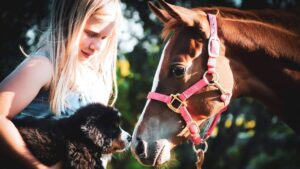
Interview with Raini Johnson. Raini shares her thoughts on various topics regarding the Junior Showmanship ring.
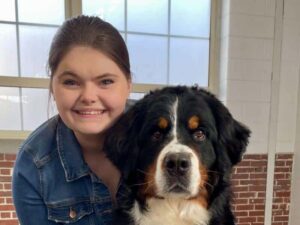
Interview with a owner handler Hunter Calvelage. Discover her journey in the world of purebred dogs, and her passion for this unique breed.

Explore the draft heritage of the Bernese Mountain Dog. Learn how to start: Draft tests, drafting equipment such as carts, harnesses and more.
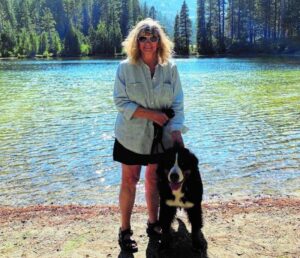
Bobbie Hefner is the breeder behind Swiss Star Farms’ Bernese Mountain Dogs. Read about the kennel’s beginnings, champions, puppies and more!
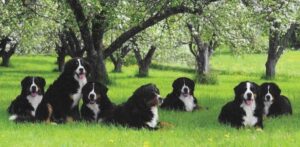
How to Judge the Bernese Mountain Dog Breed – Submitted by the Bernese Mountain Dog Club of America. Written by the late Fran Brown.
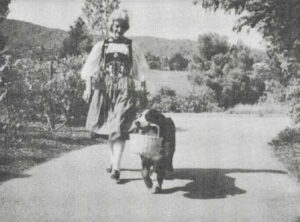
The Bernese Mountain Dog is one of the four breeds of Sennenhunde working dogs, having their origins in farming areas of Switzerland.

Living with the Bernese Mountain Dog: a loyal Swiss breed with a striking tri-color coat, ideal for families and gentle companionship.

Interview with Raini Johnson. Raini shares her thoughts on various topics regarding the Junior Showmanship ring.

Interview with a owner handler Hunter Calvelage. Discover her journey in the world of purebred dogs, and her passion for this unique breed.

Explore the draft heritage of the Bernese Mountain Dog. Learn how to start: Draft tests, drafting equipment such as carts, harnesses and more.

Bobbie Hefner is the breeder behind Swiss Star Farms’ Bernese Mountain Dogs. Read about the kennel’s beginnings, champions, puppies and more!

How to Judge the Bernese Mountain Dog Breed – Submitted by the Bernese Mountain Dog Club of America. Written by the late Fran Brown.

The Bernese Mountain Dog is one of the four breeds of Sennenhunde working dogs, having their origins in farming areas of Switzerland.
The best way to ensure a long and happy relationship with a purebred dog is to purchase one from a responsible breeder. Not sure where to begin?
Contact the National Parent Club’s Breeder Referral Program, which is listed on the AKC Breeder Referral Contacts page.


"*" indicates required fields
Showsight Magazine–the world’s most influential purebred dog publication since 1992. Each issue reaches a global audience dedicated to preserving the history and health of purpose bred dogs. Filled with award-winning editorial focused on news and insights from the dog show community, top breeders, handlers, AKC Judges, and more!